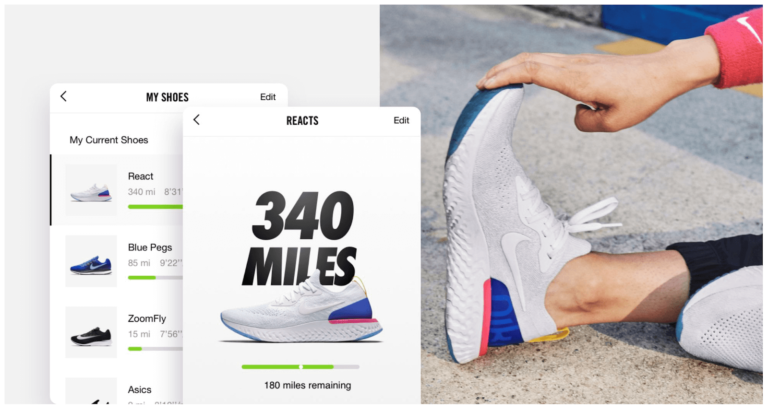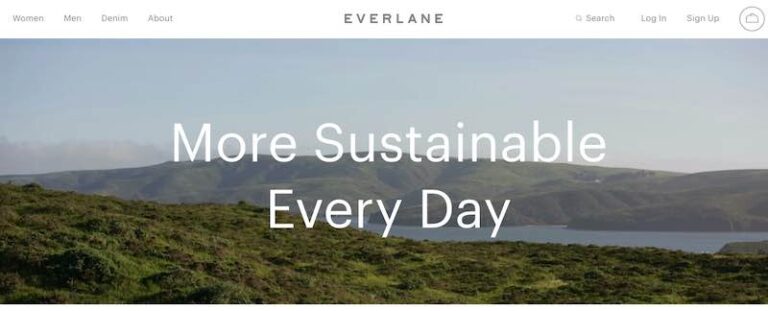Source: Amazon Seller Central
FBA fees are bound to change. Is your brand ready? At Tinuiti, we have a dedicated team of Amazon experts and access to the tools you need to thrive on the ecommerce platform. Interested in learning more? Contact us today for additional information.
“The greater of unit weight or dimensional weight will be used to calculate the shipping weight for all large standard-size and oversize units, except for special oversize (Source).”
What is Amazon FBA?
“It’s critical for brands to recognize that all of these changes, including FBA fee increases, can impact overall profitability and margins. This tool can help them make decisions around assortment or advertising strategy as a result of this potential profit impact.”
As Amazon is handling the picking, boxing, and shipping of your items within FBA, there are fees associated with this service. This fulfillment fee is per-unit and varies depending on the product’s category, shipping weight, and size. This additional fee is then charged when the buyer’s order has shipped.
How does FBA work?
With the Profitability Analysis Tool, we are able to provide in-depth analysis and reports to our clients giving estimations of fee increases (ie: FBA fees) across their catalog and what that impact could look like on a product-by-product basis or on a catalog-wide/monthly basis. The information this tool provides allows us to give insight into exactly how much more clients are going to pay once fees rise.
Once you have your Amazon selling account up and running, the next step in the process is to log in to your Seller Central account to set up FBA.
This tool also looks out for products that could be eligible to sell with Amazon’s Small and Light program within FBA. This program is cheaper to sell with and can save merchants additional money. It’s also important to note that Amazon just changed its threshold for the FBA Small and Light program. With the Profitability Analysis Tool in place, we can determine if clients have products that were not previously eligible. We can then make recommendations on a product-by-product basis and encourage merchants to enroll newly eligible products into the program.
Core FBA fulfillment fees (excluding apparel): The changes we are seeing in 2022 are not necessarily unprecedented considering at the end of last year, Amazon stated…
4. Ship your products
Examines small and light eligibility
2. Create your product listings
“As you’ve seen widely reported in the press and have likely experienced yourselves, costs are rising and we now need to make adjustments to next year’s fee structure in response. In 2022, we will adjust FBA fulfillment fees to partially offset the higher permanent operating costs we face going forward. This and prior fee changes since the pandemic continue to be lower than other logistics service providers. Accounting for these changes, our fees remain 30% less expensive on average than if sellers were to fulfill orders on their own, providing FBA sellers with premium expedited fulfillment and delivery speed for lower than standard service prices.”
FBA fees and recent changes
Let’s take a look at the recently updated fulfillment fees for the following categories: Core FBA fulfillment fees (excluding apparel), FBA fulfillment fees for apparel, and FBA fulfillment fees for dangerous goods.
– Emily O’Toole, VP, Retail Operations, Softlines & Beauty at Tinuiti
Before shipping, you’ll need to ensure that your products are packed safely and securely as they travel to fulfillment centers following Amazon’s packaging and preparation guidelines.
Can assist in product development
Fulfillment By Amazon (FBA) is an order fulfillment solution for merchants that offers storage and distribution of products through Amazon’s global supply chain and distribution network. This service allows you to maximize efficiency by handing over the reins to Amazon so they can pick, pack, and ship your orders for a fee. Source: Amazon Seller Central
Determines best platforms to sell on
3. Prep your products
But first, let’s break down what FBA is…
But first, let’s break down what FBA is…
But first, let’s break down what FBA is…
How to reevaluate profitability when FBA fees go up?
After you complete the steps above, as soon as a customer places an order for your product, Amazon will handle the transaction entirely. They will pick the items, box, and ship them directly to the customer on your company’s behalf. The inventory count is updated, receipts and invoices are created, and order tracking is available to the customer.
- Adjust your advertising strategies to stay competitive
- Update your pricing structure as fees ebb and flow
- Determine what Amazon platform to sell through, and more
Make sure your product listings are correctly uploaded into Amazon’s catalog with all necessary information and specify that they will be FBA inventory.
In some cases, this tool can be used in the early stages of product development. If we can get quotes on how large the product is, production cost, expected landed cost, and how much margin a client is looking to make – we can then plug this information into our tool and can give estimates on ideal sale prices. With this information on hand, we can also look at the competition on Amazon to see if this hypothetical product would be competitive and if it makes sense to go forward with launch.
FBA fulfillment fees for apparel:
“The tool was initially developed to analyze profitability margins between the Seller and Vendor Amazon platforms. After a few iterations, the tool has Amazon’s complete fee architecture built into the background, so our clients can get a detailed breakdown of their catalog profitability, product by product. It became clear pretty quickly that the tool could be adapted for other use-cases, such as estimating the impact of FBA fee increases, or as part of a client’s product development process. Clients are often surprised by how profitable some products are compared to others, which allows us to allocate resources such as advertising budgets in a way that’s going to be most beneficial to their bottom line.”
Profitability Analysis Tool Benefits
That all sounds great, but how can you track this information in one place? At Tinuiti, our team has created a Profitability Analysis Tool that helps you see the full scope of your profitability on Amazon. This tool works as a template and has Amazon’s complex fee structure fully baked in the background. With Tinuiti’s Profitability Analysis Tool, we can provide our clients with need-to-know insights including the difference between where a client’s business stands today and the potential future impacts of Amazon’s fee changes.
We can also plug in a brand’s entire catalog of products as well as their inputs (identifiers, dimensions, and classifications) and our tool can then quickly provide the estimated FBA fee, the storage fee, and referral fees for products to give a holistic view of their overall profits.
Clearly shows fee change impact
With FBA, you don’t have to create your own fulfillment strategy or begin a search for a third-party service provider. FBA doesn’t just allow you to scale your business quicker, it also qualifies your listings for the coveted Amazon Prime badge.
– Amazon Seller Central
FBA fulfillment fees for dangerous goods:
As mentioned, this tool was born around examining the fees for Amazon’s two selling platforms – Seller Central and Vendor Central. Within the tool, we plug in a client’s products and dimensions (category, sales price, etc.) and we can then output an estimation of what they would pay to sell from Seller Central vs. Vendor Central. We can then assess the products to determine whether the client would make more money using Vendor Central vs. Seller Central based on current fees.
For more detailed information on setting up FBA check out our Amazon FBA Guide for Brands.
Source: Amazon Seller Central
The last step in the process is to create your shipping plan. This includes printing Amazon shipping labels and actually sending your products to fulfillment centers.
– Bjorn Johnson, Operations Manager at Tinuiti
With the Profitability Analysis Tool in place, we have the option to enter more and more data so our clients can get a complete financial analysis of what their product profitability is at a higher level. Our tool allows clients to see if they might want to reshuffle where they sell some of their products for maximum profit. It can also give insights into whether a brand needs to adjust their overall Amazon selling strategy.
Amazon’s FBA program is a huge benefit for retailers who sell products through the leading ecommerce giant. When using FBA, merchants across the globe have the ability to increase their profits, streamline their operations, and boost overall customer satisfaction. But there are a few things that you need to know before you dive into the world of FBA. In this article, we’ll break down the basics of FBA, new updates to FBA fees, and how Tinuiti’s Profitability Analysis Tool can help your business thrive on Amazon when these fees increase.
Jump to ‘How to Reevaluate Profitability When FBA Fees Go Up?’
That all sounds great, but how does this service actually work? Let’s look at a brief breakdown of each step in the process.
Interested in learning more about FBA fees and our tools at Tinuiti?
As FBA fees fluctuate, it’s increasingly important to reevaluate your performance on Amazon and to take a closer look at your profitability. Even if it’s just by a few cents, these fees will undoubtedly change year over year. By having a clear understanding of how these fee changes might impact your business, you can:






